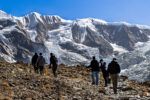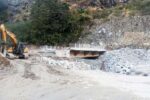The year 2020 was, in fact, to be a big year for Nepal’s tourism sector as the country’s hotels were expecting millions of guests.
What came in between was coronavirus, and with it, Nepal’s hotel and tourism industry faced the worst crisis.
A major blow from Covid-19 outbreak and the 5-month prolonged lockdown hitting the hotel industry severely as this sector was all set to start another year of a significant growth.
Covid-19 brought an unprecedented crisis because of the crisis in the tourism industry without a single national and international tourist.
According to the Ministry of Culture, Tourism and Civil Aviation, because of the lockdown, Nepal’s tourism industry is estimated to lose approx $400 millon (approx 48 billion rupees) by the end of this month.
Due to the restriction and uncertainties, International travelers are less likely to travel in the near future and local travelers will be the first to explore.
Experts say the crisis in the tourism sector will remain until 2021 even if the lockdown ends as unlike other industries, the hospitality and tourism sector cannot restart until tourist gets the confidence to travel again.
Apart from the financial loss, as many as 3,00,000 workers of the hotel industry are adversely affected due to the shutdown as they are sent to their homes satisfying themselves with a meager 12.5 percent of their basic salary.
Undoubtedly, this is a difficult time for the industry as a whole. However, the crisis can be an opportunity in disguise.
Travel industry has come to halt for now but travelers are dreaming of their next escape when restrictions are lifted.
There are different methods as the hotels can use to recover after the travel ban is lifted.
Use of Health & Safety measures
To ensure the health and safety of all guests and staffers, hotels need to implement new policies for interaction fo the guests.
Hotels need to ensure social distancing floor management and use of sanitizer, wipes, and mask to all guests.
Cleanliness and use of disinfection in key areas of hotel rooms needs to be ensured.
Similarly, in the food-service, the furniture set up needs to be adjusted for social distancing with the “Grab and Go” option should be included.
Digitalization for better hotel experience
From digital room keys, self service check-in and check-out and contact-less payment solution, hoteliers must ensure less human contact.
Shift to digital marketing channels
Hoteliers can’t afford to disappear at this time. They have to be visible and continue to use major digital channels including emails and social media to engage with their customers.
Effective digital and social media strategies must be rolled out as part of the communication plan to create an appealing hotel experience.
Fix website and focus on data-driven marketing
Due to an increase in internet access in Nepal, hoteliers should work on a quality mobile-friendly website with value-based content to their consumers.
Hotels need to work on Search Engine Optimization and online review management. The use of customer data should be encouraged to predict a customer’s needs and desires.
Focus on Local
Due to the restriction and uncertainties, International travelers are less likely to travel in the near future and local travelers will be the first to explore.
The hoteliers, therefore, should promote their marketing plans including local tourism packages to the Nepalese customers.
Special experiential packages and promotions targeted at ‘locals’ should be the driving mantra now.
Maintenance and Upgrade
This outbreak does not mean hoteliers are closing doors and just waiting for the normal situation. This is the best time to utilize on implementing maintenance and renovation to make sure everything in the property works perfectly.
Be Careful with Pricing
Reducing the price too low is not the solution as it will cost the branding of the company.
The hotel can go with discounts and offers. It is noticeable that demand will not be related to price and travelers will choose their hotels based on other factors than the room being at the lowest price.









Comment